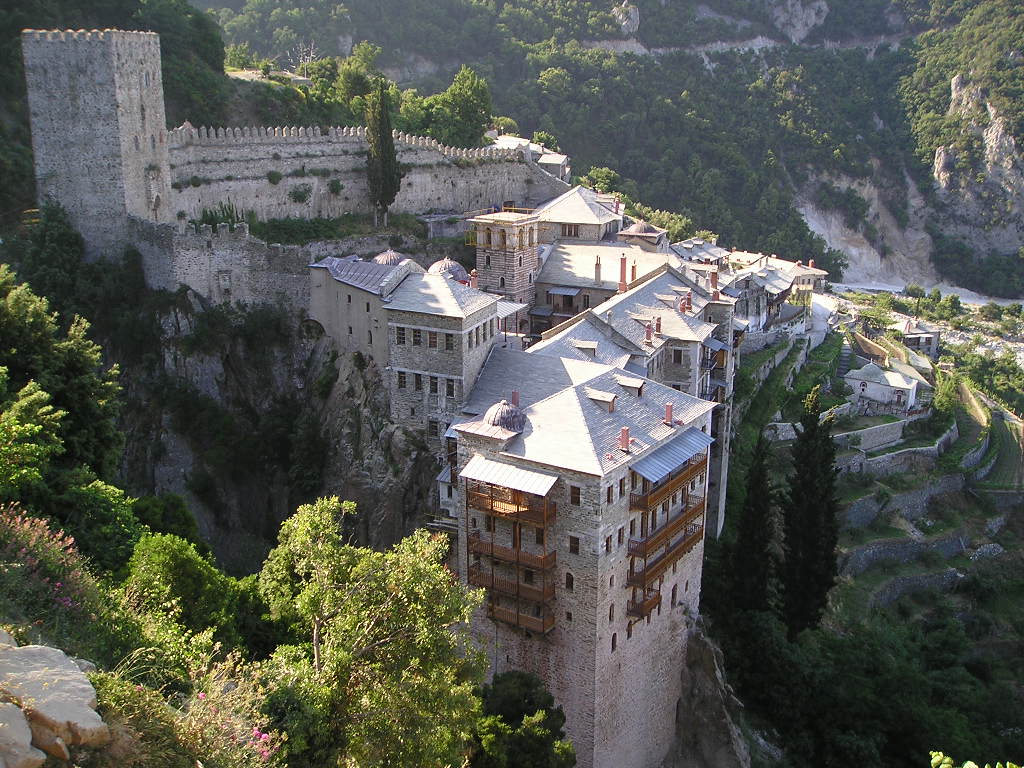No Women Allowed

Protruding off the southeastern shore of Greece into the Aegean Sea is a mountainous peninsula called Mount Athos. A monastic state, Mount Athos is home to twenty Eastern Orthodox monastaries, twelve communities of monastic hermits (called “sketes”), and two settlements. The entire population of Mount Athos is roughly 2,200 — all of them male.
And women cannot visit, either.
Mount Athos has been home to this series of monks since at least the year 885, when Byzantine Emporer Basil I declared the “Holy Mountain” (as it is often called in Greece) to be a place set aside for monks, forbidding laymen, cattle breeders, and farmers from the rocky land. From its establishment on, Mount Atros has been treated as a special, seculded place so that monks could find a higher level of enlightenment. While now officially part of Greece, the area maintains itself as a sovereign — a distinction guaranteed to it by the European Union upon Greece’s entry therein.
To keep Mount Atros ideal for the monks’ meditations and prayers, the monasteries agreed to disallow women, children (“beardless” by rule but “under 18 in practice) and, oddly, eunuchs from entering the mountain, even as visitors. The powers-that-be have taken this rule to extreme levels, even applying it to animals wherever possible. (Female cats are allowed in order to help control the rat population, and in recent years, hens were introduced to help provide eggs — a cheap source of food.)
But the ban, while draconian, is enforced peacefully and in special cases, lifted. Three times in modern history, Mount Athos’ monasteries have accepted refugees, including women and children: in 1770, during the Russo-Turkish War; in 1821, during the Green War of Independence; and during the Holocaust. Also, in 1929, Miss Greece dressed up like a man to enter the area, and in 2008, five Moldavians (four women) accidentally entered, but in all cases, the trespassers (accidental or otherwise) were forgiven.
In 2003, the European Parliament requested that the ban on women be lifted. To date, it has not. But recently, some of the artifacts from the area have gone to museums outside Mount Athos, making women able to view them for the first time.
Bonus fact: Qualified outsiders who wish to explore Mount Athos may only do so provided they obtain a proper visa which must be applied for well in advance of the visit. Two types of visas are granted: one, which allows the visitor to visit any one location (of the visitor’s choosing) but only for three days, maximum; and another which is open-ended but limits the visitor to one, specified monastery during his visit. The visa document (see one here) is written in Greek and uses the otherwise antiquated Julian calendar.
From the Archives: Ultramarathon Monks: Monks which pull of incredible feats (and women are allowed).
Related: “The Monks of Mount Athos: A Western Monk’s Extraordinary Journey on Eastern Holy Ground,” by M. Basil Pennington. Three and a half stars.

Leave a comment